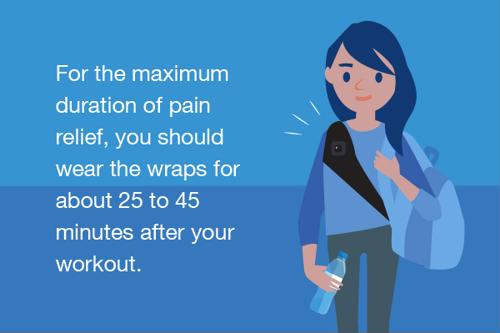
3 vibration therapy options for post-workout recovery
Does your post-workout recovery need a boost? Vibration therapy could be the answer.
Here are the top three ways to add vibration therapy to your post-workout routine:
1. Whole body vibrations
These systems send vibration frequencies throughout your entire body. You can purchase whole body vibration machines to use in your home, or find a local gym that offers them. They have a variety of settings, including frequency, amplitude and horsepower, which control how intense the vibrations are. You can stand, sit or lie on the machine, which has a vibrating platform that transmits energy throughout your body. By forcing your muscles to contract and relax, the machines are said to aid in weight loss, increase blood flow and reduce post-workout muscle soreness, according to the Mayo Clinic. You can also perform exercises on these vibrating machines, including stretches, push-ups and squats. Alternatively, utilize whole body vibration machines for post-workout relaxation. The melodic buzzing re-establishes healthy blood flow to your muscles after the strenuous movement.
However, keep in mind that whole body vibration does come with some significant drawbacks. The devices aren't portable, which means you're stuck in one place while using them, and you'll have to make room for a large machine somewhere in your house. Price can also be an obstacle, with entry-level models starting at $250 and the best costing more than $1,000.
"Intellinetix products are ultra comfortable for seemingly effortless pain relief."
2. Targeted vibrations
These handheld devices use the same technology as whole body vibration machines, but they allow users to focus on the therapy to specific areas of the body. With mild compression and vibrating motions, localized therapy enhances blood circulation, improves range of motion and flexibility and provides pain relief to specific muscles and joints. Some are handheld vibrating massage tools which have different attachments and various speeds to help target specific muscle groups.
Others are wearable, easily targeting sources of pain with localized, portable vibration therapy. Intellinetix products, for example, are hands-free, discrete and easy to use. Therapy gloves can ease symptoms from arthritis or chronic joint pains that make certain exercises difficult to complete. The vibrating knee and elbow and calf and shin wraps provide targeted relief even after just five minutes. For the maximum duration of pain relief, you should wear the wraps for about 25 to 45 minutes after your workout. Made with breathable cotton materials and anti-slip design, Intellinetix products are ultra comfortable for seemingly effortless pain relief. As a bonus for your wallet, Intellinetix products also retail for significantly less than other portable vibration therapy products. Plus, more wraps, including a universal one, will be available in the coming months for even more localized therapy.
3. Vibrating foam rollers
Those who work out frequently often turn to foam rollers to massage their muscles after strenuous exercise. Add vibration therapy to this muscle recovery tool and you have an automatic upgrade to your standard foam roller.
In a recent trial published in the Journal of Sport Rehabilitation, researchers compared the effects of vibrating and non-vibrating roller intervention on range of motion and pressure pain thresholds. While they didn't find a significant difference in range of motion, the results suggested that vibrating rollers can increase pain tolerance more effectively than non-vibrating rollers. Of course more research is necessary, but vibrating foam roller supporters cite significant improvements in performance between, during and after workouts. These advanced rollers also usually have a few vibration speeds so you can roll to your own preferences.
Find the option that works best for you, then get ready to reap the benefits of adding vibration therapy to your post-workout routine.
